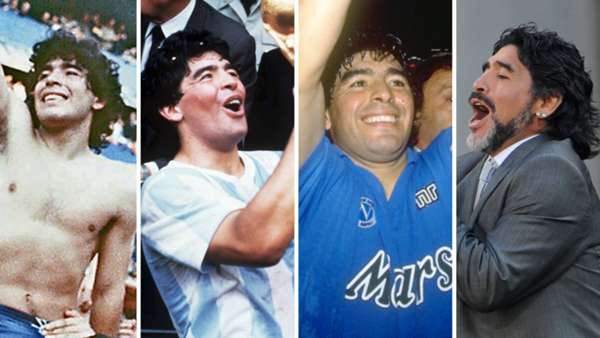A living legend, a man whose every word and action is headline news.
Diego Maradona turns 60 on Friday, although the Argentina and Napoli idol seems to have packed in enough action into his six decades to fill 10 regular lives.
From the mop-haired prodigy that first took the Primera Divison by storm, through his adventures in Spain, Italy and on the international stage, to the present day, Maradona has rarely been away from the public eye.
In that sense he is arguably football's first superstar; a flawed genius with the ability to inspire and exasperate in equal measure.
This saga began 60 years ago and still promises to hold a few more chapters yet before its close...
A star is born
On October 30, 1960, Diego Maradona and Dalma Salvadora 'Tota' Franco welcomed their fifth child and first son into the world.
The couple had emigrated years earlier to the outskirts of Argentina's bustling capital city Buenos Aires from rural Corrientes, making their home in the shanty town of Villa Fiorito.
Legend has it that on the day Diego Jr. was born, doctors at the Policlinico Evita hospital in nearby Lanus had already attended 11 childbirths, all of them girls, leading to a yell of “Gol” by those present to greet the first boy of the day.
Two months later the proud parents took their newborn to Pompeya Church for his baptism, thereby giving the world its first photograph of the future icon: chubby, dressed in a checked shirt and with a full head of thick black hair.
“It rained more on the inside than outside,” Maradona famously once said of his first home. In three rooms, without running water, dwelled the entire family: Diego Sr and Tota, Diego Jr, his four elder sisters and three younger siblings.
Outside the dirt roads of Villa Fiorito played host to his first football games, but on rainy days they would become rivers of mud – although the house's tin roof did little to stop the downpours, prompting the Maradona family to frantically search for buckets and pots to avoid flooding indoors.
At the age of three Diego received his first football as a gift from his uncle, and the pair were soon inseparable. He honed his talents on the dusty roads and empty wastelands of Fiorito, taking on other kids from the neighbourhoods or entertaining himself juggling on his own.
That could be a perilous pastime in the barrio, though, as Diego recalled years later. “One day I was chasing a ball, I would have been younger than 10, and I fell into a septic tank,” he stated in his autobiography. “I was up to my neck in sh*t, but I didn't try to get out: I kept looking for the ball and sank further and further in.
“My uncle saved me by wading waist-deep in the tank, almost up to his head, and stretching his hand out to grab mine.
“If he hadn't done that I would have died in that septic tank... chasing after a football.”
The world meets 'Caradona'
By the time Maradona's 10th birthday arrived in October 1970, his ability with the ball at his feet had already been recognised.
Having started out at Estrella Roja, a neighbourhood club run by his father, in 1969 the opportunity arose for the youngster and two close friends from Fiorito to undergo a trial with Primera Division club Argentinos Juniors.
After finally convincing Don Diego to let him travel into Buenos Aires for the test, the eight-year-old hopeful took two buses to arrive at Argentinos' training complex, only to be faced with devastating news: owing to torrential rain, the day's activities had been cancelled.
Rather than send the batch of aspiring footballers back home disappointed, the club's youth scout Francis Cornejo instead took them to Saavedra Park on the other side of town and set up an impromptu match. “They say that once in a lifetime every man witnesses a miracle, but that most do not realise it,” the late coach stated in his book, Cebollita Maradona when recalling his first glimpse of Maradona. “I did."
Indeed, such was the young Diego's assurance with the ball that Cornejo soon became suspicious. “When he controlled a pass in the air with the left and, without letting the ball drop, hit it with the same foot to knock it over the defender's heads I was in no doubt: he was a dwarf, and a lying dwarf, because that kid couldn't be eight years old,” he added.
Once the trial was over, the coach demanded Maradona present his identity card to prove he was who he was claiming to be. “'I don't have it', he answered in a low voice, as if I'd caught him skipping school. My mother has it back home'.
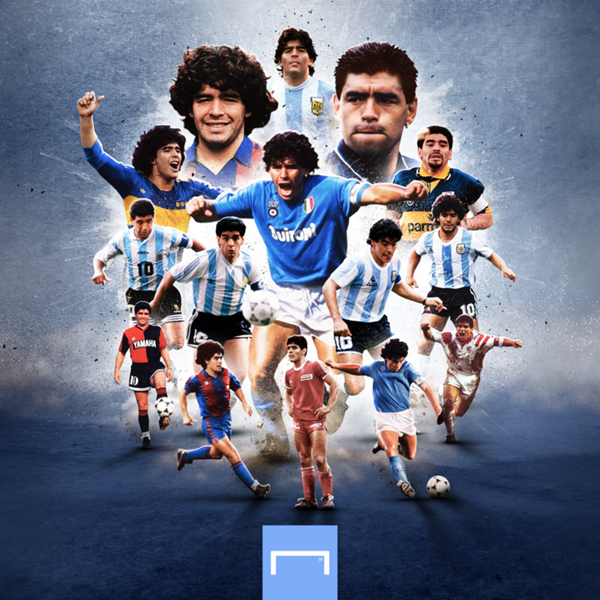
“I made him look into my eyes and asked him again, 'are you sure you were born in 1960?'” Cornejo continued. “'Yes, sir', he replied... If he was really eight I had found a hidden gem for my team, a player who could make the difference. But if he was older we couldn't afford to lose him either.”
The mystery over Maradona's age was eventually resolved and, from 1971 onwards, he entered Argentinos' Cebollitas youth division. That Diego-inspired side soon became the stuff of legend, winning, according to the man himself and his coach, 136 straight games between 1973-74 while winning the national league at Novena (Under-14) level.
His prodigious abilities also caught the eye of the Argentine press. On September 28, 1971 the 10-year-old earned a brief column in Clarin after wowing the Argentinos crowd during the half-time break of a first-team match with his tricks. At that point, though, there seemed to be some confusion over the wonderkid's true identity.
“He is left-footed, but he can use his right. Diego Caradona, aged 10, earned applause at half-time in Argentinos Juniors vs Independiente, showing off his rare ability for 'keep-ups' with his instep and even with the outside of his boot,” the article, titled “Bearing and class of a superstar,” explained.
“He doesn't look like a modern kid, but he is, and with that typically Argentine love for the ball our football will never stop feeding off great players.”
Argentina's most wanted
It did not take long for the young 'Caradona' to make a (real) name for himself.
Within five years of that first appearance for Argentinos and still 10 days short of his 16th birthday Diego made his first-team debut off the bench in a 1-0 defeat to Talleres. With his first touch of the ball he nutmegged his marker; he would later say of that day, despite the result, “I touched heaven with my own hands.”
By 1980 and his 20th birthday, Maradona had already become a fixture in the Argentinos team, racking up more than 150 appearances and 100 goals for La Paternal side to become one of the highest-rated players in Argentine football.
He had also broken into the Argentina set-up, although at that point his experience in the Albiceleste had been rather bittersweet. Two years earlier he had been left in tears by coach Cesar Menotti due to his last-minute exclusion from the nation's ultimately triumphant World Cup bid on home soil, only to bounce back in 1979 by leading the Under-20s team to glory in Japan.
Maradona finished 1980 as top scorer in both the Metropolitano and Nacional championships, making him the first and only player in Argentine football history to take that crown in five different competitions. By the end of the year the question was not whether he would leave Argentinos, but where his next destination would lie.
After the 1978 World Cup, Sheffield United came close to sealing one of the most curious sensational transfers in football history, only for the deal to collapse following a disagreement over agents' fees.
Back in Buenos Aires, meanwhile, the contest boiled down to a straight fight between Superclasico giants River Plate and Boca Juniors.
River's transfer offer and contract terms were vastly superior to those tabled by the Xeneize, who were in the midst of a financial crisis; Diego, though, put his foot down and insisted he would only move to the Bombonera.
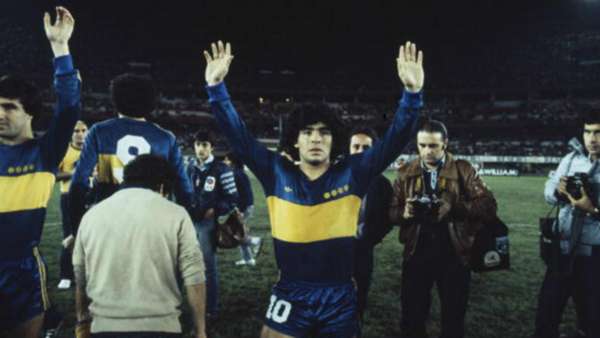
Boca, then, eventually got their man, sealing a devilishly complex 18-month loan deal with Argentinos – who were to receive US$2.5 million, six Xeneize players and the right to transfer their debts with the Argentine FA onto the club's balance sheet – and Maradona completed his move on February 1981.
The enormous fees eventually proved impossible for Boca to fulfil, and by the time the 1982 World Cup came along Diego had been sent back to La Paternal due to breach of contract, although given that the No.10 had already agreed a transfer to Barcelona he never again represented his boyhood club.
Over at River, meanwhile, a mutual loathing grew between player and snubbed club which survives to this day.
The only way is down
When Maradona blew out the candles on his 30th birthday cake he did so as the undisputed king of world football.
His exploits at his beloved Napoli, lifting the Scudetto in 1986-87 and 1989-90, had led the south of Italy to accept him as one of their own, even leading to split loyalties at the 1990 World Cup.
It may have been the Mexico finals in 1986, which included the infamous 'Hand of God' and 'Goal of the Century' strikes against England and a series of virtuoso performances aside, that made the entire world sit up and applaud Maradona's talents; but in Italy a different facet of his personality came through: his immense bravery and ability to play through the pain.
A week before the action kicked off in 1990, Diego had been felled by two over-zealous training ground challenges.
The first ripped off the entire nail of his left big toe; the second caused considerable damage to the left ankle that had been shattered by the 'Butcher of Bilbao', Andoni Goikoetxea during his time at Barcelona, causing the joint to swell to the size of an apple.
“I have almost never felt as much pain as during that World Cup,” Maradona confirmed. “I don't know how my ankle held up.
“I met several times with the doctor and he said I couldn't keep playing in that state. But I wasn't about to leave the guys. They proved to me in every game they were giving everything and as captain I wasn't going to drop out."
At 30, Maradona should have been entering his peak on the pitch and, after an understandably slow start to the 1990-91 Serie A season given the ravages inflicted on his body that summer, he soon found his rhythm again.
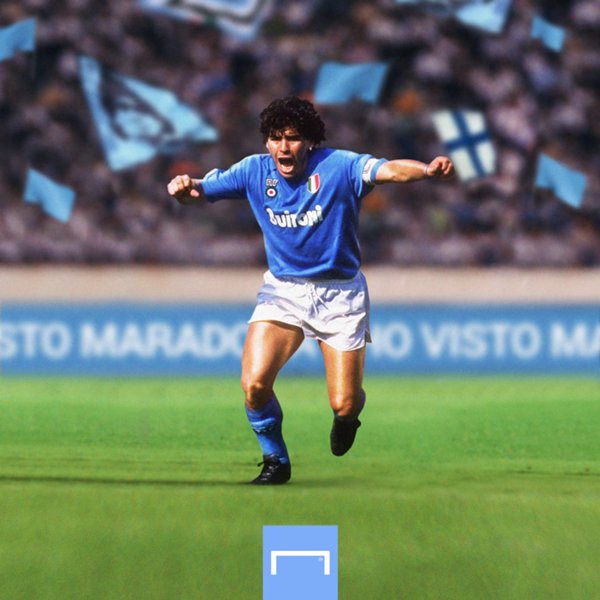
On October 28, 1990 he received an early birthday present as Napoli battled past Fiorentina 1-0 at a packed San Paolo, young defender Ciro Ferrara netting the only goal of the game.
Four months later, however, disaster struck. Diego was chosen for post-match drug testing following his side's victory over Bari and tested positive for cocaine.
The star fled back to Buenos Aires, where he was soon arrested on further drugs charges and ordered to undergo rehabilitation, while the Italian FA handed down a ban of 15 months from footballing activities.
Despite that scandalous end to his life in Naples he remains a legend in the city, credited with giving its citizens respect and dignity in the face of the discrimination they have historically suffered at the hands of the wealthier north of Italy.
The lost decade
That failed drugs test at San Paolo marked the beginning of a dizzying, bewildering period in Maradona's life in which the wayward star appeared to spiral out of control.
Upon completing his ban he returned to the field in underwhelming spells at Sevilla and Newell's Old Boys and earned a call-up to the Argentina squad, where early signs that he may have recovered the magic were destroyed during the 1994 World Cup when a second doping test, this time for a banned diuretic, earned him another suspension and effectively ended his career at the highest level.
From there he turned his hand to coaching in short, chaotic stints with Argentine sides Deportivo Mandiyu and Racing Club before finally ending his playing days back at the Bombonera, overweight and a shadow of his former self but still capable of his old wizardry when the mood struck him.
On October 25, 1997, only able to take the field thanks to a court injunction suspending yet another doping ban, he played his final professional match in Boca's Superclasico victory over River.
The nadir for Maradona arrived at the start of 2000 when he was hospitalised while holidaying in exclusive Uruguayan beach resort Punta del Este. Doctor Jorge Romero later described to Infobae the call he received from the star's long-time agent and nocturnal partner-in-crime Guillermo Coppola, who told the medic: “I am here with Diego Maradona, who has been sleeping for two days. We cannot get him to wake up."
“If he has been sleeping for two days,” Romero replied, “he isn't sleeping. He is in a coma.”
Close to death, Maradona was treated for hypertension and arrhythmia, and by the end of January had travelled to Cuba in order to enter an extensive rehabilitation program and treat his ongoing addiction problems.
Diego stayed in Cuba on and off for almost four years, becoming an honoured guest of then-president Fidel Castro and a committed defender of the island's socialist regime.
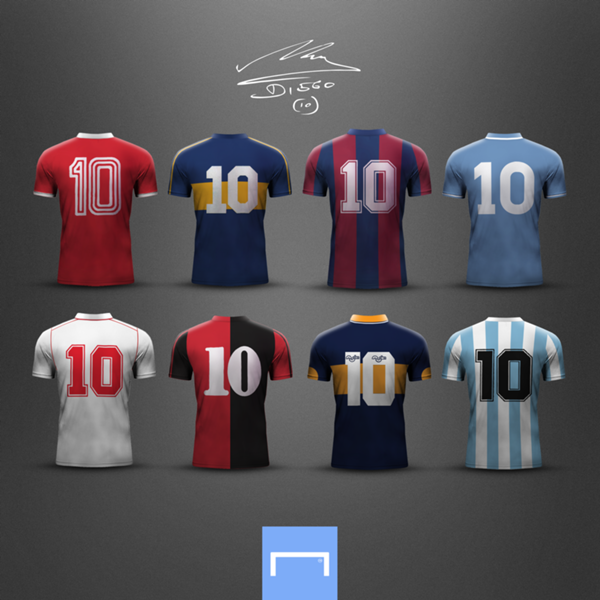
Speaking of his addiction years later, Maradona credited his eldest daughter with finally helping him to beat the demons. “Nobody should hang a medal off their chest, it was Dalma who got me off them,” he told TyC Sports, while also recalling his collapse in Punta del Este.
“I hit rock-bottom in the coma. I remember I was in something like black star and hooks were being thrown at me, I held my hand out and couldn't get out. And I remained in the coma.”
Four years after hanging up his boots, in November 2001 aged 41 Maradona was finally able to hold his farewell match, a star-studded affair at the Bombonera which included the likes of Marcelo Bielsa, Eric Cantona, Davor Suker, Javier Zanetti and Juan Sebastian Veron.
Back in Cuba, meanwhile, he left a different kind of legacy: in 2019 the star's attorney Matias Morla revealed that he had fathered three children on the island, taking the total number of Maradona's acknowledged offspring to eight.
Taking South Africa by storm
Following his brush with death, Maradona continued to suffer health troubles, memorably ballooning in weight before undergoing gastric bypass surgery in Colombia which helped him shed more than 50 kilograms in a matter of months.
He also received his break as a television presenter, fronting a talk show in Argentina titled La Noche de 10 (A night with No.10). Pele, Mike Tyson and Fidel Castro were among Diego's star guests on the show, as was Maradona himself in an unforgettably bizarre mocked-up interview.
But despite this flirtation with showbiz he remained close to the football world, culminating in his shock appointment as Argentina coach in 2008 through to the end of the 2010 World Cup in South Africa, on the eve of his 50th birthday.
Maradona's time at the Albiceleste helm, though, will ultimately be remembered for his off-pitch antics more than his side's prowess on it.
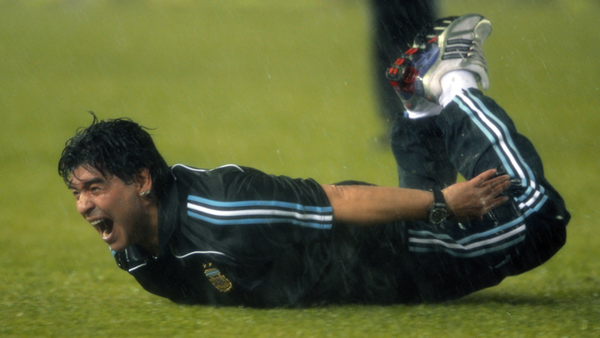
He dived clean across the soaked Monumental pitch to celebrate Martin Palermo's crucial World Cup qualifying winner against Peru, and later invited critical journalists to “suck it and keep sucking” in his post-match press conference.
At the finals themselves, Maradona drew attention for his ever-quirky statements to press and curious team selections, famously picking Ariel Garce in his squad after an alleged dream where he glimpsed the Colon defender with his hands on the trophy.
The team itself, with stars such as Lionel Messi, Carlos Tevez, Gonzalo Higuain, Sergio Aguero, Maxi Rodriguez and Juan Sebastian Veron, was packed with attacking potency but lacked balance across the pitch, with Newcastle midfielder Jonas Gutierrez and Velez Sarsfield youngster Nicolas Otamendi used as makeshift right-backs in the absence of a real option in the position.
Argentina cruised to the quarters, scoring 10 goals in four games, but were brought swiftly down to earth by Germany.
Maradona had exhorted his troops to “not believe the bullsh*t” when it came to the Europeans, but they instead received a footballing lesson as Joachim Low's men ran out easy 4-0 winners.
The Albiceleste nevertheless received a raucous reception back home, with thousands of fans filing out to greet them at the airport; although few were subsequently surprised when, following a brief pretence of keeping him on in the role, AFA strongman Julio Grondona promptly engineered Maradona's resignation due to a supposed conflict over his backroom staff.
Diego at 60: what does the future hold?
Just as few could have imagined back in 2000 that the ailing Diego would a decade later be leading Argentina once more into a World Cup, 10 years ago it would have taken a brave man to predict the 60-year-old gearing up for the coming Primera Division season in his home nation.
Gimnasia kick off a shortened, Covid-affected version of the Argentine top-flight on their coach's birthday at home to Patronato, and if the events of the last 12 months are anything to go by, Maradona is set for a lavish celebration, even if the stands in La Plata remain silent due to the pandemic.
Throughout the 2019-20 season, battling a seemingly doomed relegation battle and beset with chronic shoulder and knee pain that severely limited his movement, he was feted by every side Gimnasia visited, proof of his unique standing as Argentine football's biggest idol.
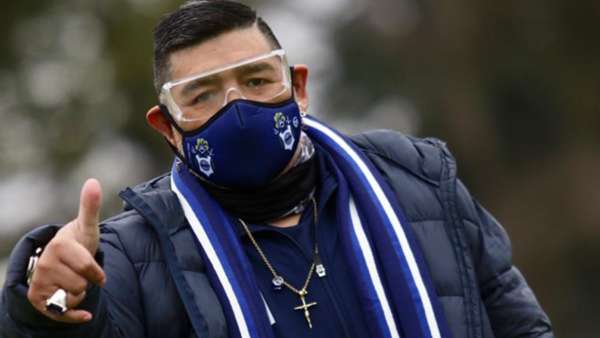
After leaving the Argentina helm he cut a nomadic path through world football, appearing on the bench at Emirati outfits Al Wasl and Al Fujairah, taking over the presidency for Belarus' Dinamo Brest and then sending Mexican football into raptures at the helm of Dorados, falling just short of promotion in his single term with the Sinaloa side.
It has been a long, and not always smooth journey for Maradona from Villa Fiorito 60 years ago to his current home in La Plata.
One of the greatest footballers the world has ever seen, he has also suffered countless setbacks and scandals over the years which have threatened to tarnish his legacy for good.
As Maradona himself stated, however, the ball cannot be tainted. Whatever one thinks of his antics over the decades, he remains a fascinating figure, thanks to his brilliance as a footballer but also, perhaps, precisely because his many flaws remind us that he is all-too human.
It is as one of the greatest players of all time that he will ultimately be remembered, and if anything his legend seems to grow, not diminish, as the years and decades go by.
Latest Stories
-
Investments in exploration activities increased by 181% to $90m in 2024
10 minutes -
Galamsey fight is complex, but I say Aluta continua – President Mahama
13 minutes -
Education minister inaugurates KNUST Governing council, urges focus on STEM education
49 minutes -
“Stop feeling sorry for yourselves” – Akufo-Addo urges NPP after election defeat
1 hour -
Guiness to launch ‘Smirnoff in the Mix’
1 hour -
Gold price falls almost 2% to two-week low
1 hour -
I did not kid myself that I would win galamsey fight in 4 months – President Mahama
2 hours -
I’m proud NPP lost 2024 election; I’ll quit politics if… – Hopeson Adorye
2 hours -
Manasseh Azure writes: My mixed reaction to President Mahama’s Supreme Court nominations
2 hours -
My administration is committed to decentralising opportunities – Mahama tells workers
2 hours -
ECG will not be privatised – Mahama assures organised labour
2 hours -
T-bills auction: Government to borrow GH¢6.32bn on May 2, 2025
2 hours -
Power crisis to deepen as Karpower threatens shut down in 7 days – Energy Minister
3 hours -
Atlantic Mall: The prime location for thriving businesses
3 hours -
Marking the time: Is the 9-to-5 workday still the way?
3 hours

